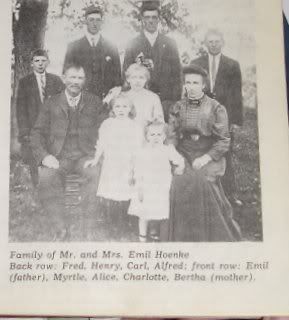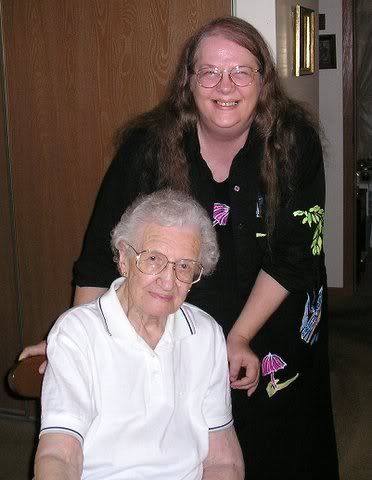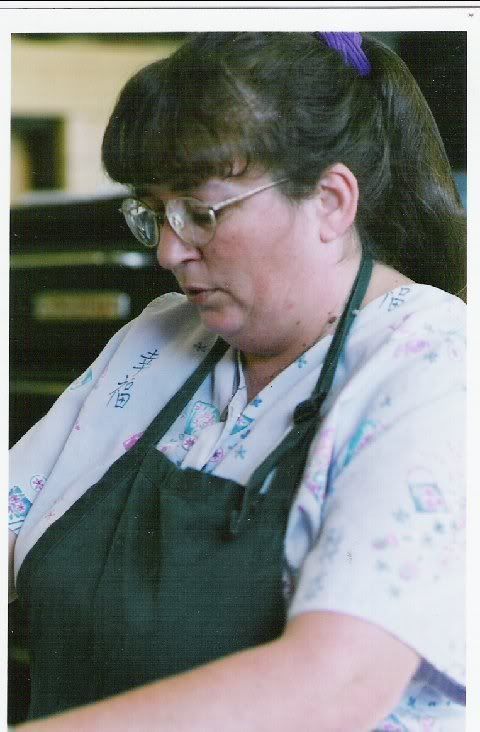This is Wednesdays' Post - the 18th

I thought I could go into work this morning, but then we couldn’t thought I could go into work this morning, but then we couldn’t. Maybe we could, but we can’t. I don’t know how to explain what it feels like to lose ones nerve. We had woken up earlier been on-line for about 45 minutes and then gone back to bed. We woke up write at 6:30 am, so had time to get ready, but then fell back asleep for a half an hour. Then we felt very rushed, so we wrote Sr. and email saying we’d be in after an hour. But, now the hour is up and we wrote her saying that we’d be in be in tomorrow instead.
I should have seen it coming because as we were progressing through the hour, we were thinking more and more like we didn’t want to go to work; that it was too hard. Yesterday was terrible and I just couldn’t make myself go through another day
… I think we need time to regroup. We need to be motivated and not so mopey.
Having Rich and Dr. M. out of the office makes things feel terrible. I’ve gotten several requests too to have my blog opened up at least to my closer friends – the circle in back of Rich and Deb. But, we are deciding to have the blog remain closed to all but Dr. M. The logic is that if it were subpoenaed that I could honestly say at this point it was a correspondence just between me and our doctor. I think that’s very important, but if it were pushed through, then she would have to just read that Rich and us are being very well loved between us and that she would have had to at least pretended to like him for at least some of the last 14 years. Ok, ok … enough said there … this is about me not her … she can write her own private place.
Ok, ok … shhhhhhhhhh girls, cmon we don’t have to go there … shhhh. We’re a little riled up now. It’ll be ok, it’ll be ok.
We got a couple notes … short one from Sweetie Pie last night and this morning …
Just to say like hi. Man-o-man I feel like a love-sick school girl. I know that to
make this day right, I’m going to have to be wearing my student selves. But, maybe it wouldn’t hurt to write just a little bit longer? Still would like to have turned in a couple of papers today, at least that’s the rumer down the grape vine. But, one thing at a time. First I gotta open the school and check it out and then do the next thing and the next. I’d like to say that my medicine is working, but it doesn’t seem to be working very good at this moment. Just in this gloomy depressed place that has a small window that opens into a space that wants to see her lovey and that’s about it. Maybe if we hold dog again for a little bit it will get better? Shoot, shoot … It doesn’t help the school work cause if we’re going to sit around and hold the dog? Shhh, shh ok, maybe just for a little bit?

Let’s say you have to take the empty bottles of water out and get some fresh, ok?
Is that a deal?



That’s better …

We let her rest awhile. We drifted off then until dog dropped the water bottle on the keyboard. I’m sure it was an accident. We don’t have such hard feelings right now as we were. The time is about 10 to 9 am. Missy helped too … she was laying on the table to the left of us. That’s why the bottle was in front of us. Silly kitty … she’s such a worry wart. Ok you. What do you say about a fresh cup of coffee …
you can do it, right? Uh huh … Great … go ahead!
Ahh an orange! Excellent!
Ok, let’s think some positive thoughts now, k? Dr. Marvin and our fishing friend are coming back and they are going to want to hear we’ve had some successes. Is there anything we really need to do, BUT go to school? Ok, ok … let’s do a little check. We’re going to be ok … the bad feelings have passed. We are going to need letting work go for the day and get some work done at school. We can do a little writing, but it has to be focused on going forward. There’s nothing worthwhile yesterday to write about, except we made probably one error in feeling a need to stop for bread and butter. We didn’t REALLY need that. To make matters worse, we used the salad dressing in addition to it, so ate too much of that also. BUT, that was yesterday and today is new. So far, so good. Just coffee, water, cereal and an orange … It’s now 9:10 am and we’re up and dressed and about ready for the day. I feel mostly happy. Ok, you happy you, why don’t we then go to school for a little?
Ok, shoo!
Topic: u01d1 Cognitive Psychology
Date: April 16, 2007 7:08 PM
Subject: Re:In response to u01d1 from Ann Garvey
Author: Robert
Ann,Sorry to have only just responded to your post. I enjoyed reading it very much. You provided rich and interesting discussion on the topic. I agree that psychology must be careful not to define life in place of counsel and guidance. I like to say in fact that the moment one tries to define anything, that very thing is limited. Along that same line, it is my sense that experience is not “as real as our ability to describe it” as you note but certainly as real as our ability to understand it. Wouldn’t you agree that we are often able to understand something much better than our ability to describe that which we understand to another may otherwise indicate?
Bob
Ok, this is the comment that we are going to need remembering to get back to. But, for now we’re going to hold off … This student has continued on and we’ll try to forward this response to the next posts. But, for now it is a simple notation that he is having problem with the citations and is working that through with the Professor. I like this one … she seems very positive and involved. BUT, we gotta do our part. Now. What would be necessary to get us started in our ventures in writing? How about first we pull up the question at hand. I believe we’ve read this chapter already so that part is accomplished.
u01d2 Research Methods
Describe three research methods used by cognitive psychologists.
Contrast three research methods used by cognitive psychologists.
How might an insight gained from basic cognitive psychology and affective psychology lead to practical uses in everyday settings?
Ok … that doesn’t seem too complex. I remember there is a chart in the book that describes about 6 research methods … so, we’ll have to choose from there.
We need to choose from controlled laboratory experiments, psychobiological research, self-reports, case studies, naturalistic observations, and computer simulations. I think I chose this way before, but we’re going back to our favorites self reports, case studies, and naturalistic observations. I think … let me think through that once more. I could choose the lab one to better contrast, but I don’t in general like lab reports. And, I want to stay away from Artificial Intelligence and biological … I feel those two are really beyond my scope. Ok, let’s stick then with the first 3 choices.
Writing paper …
Topic: u01d2 Research Methods
Date: April 18, 2007 2:03 PM
Subject: In response to u01d2 from Ann
Author: Garvey, Ann
Last edited on: April 18, 2007 2:10 PM
The three research methods that I’m most interested are self reports, case studies, and naturalistic observations. I chose these over controlled lab experiments, psychobiological research and artificial intelligence (AI); because I feel that they are closer to my level of expertise and curiosity. By nature, I am more introspective and more often an observer of others behavior; I like to analyze, which means I think a lot toward my own understanding of things, which makes me appreciate more the self reports of others and the exploration of their thought patterns. I have completed a few lab experiments, but the work seems limited. I can appreciate that it is the lab experiments that produce the most articulated conclusions such as due the validity found from independent variables. I would rather read about these conclusions from others and then work the results into my own research. I think that psychobiology and AI has a lot to offer psychology, but these concepts are more difficult for me to grasp within the task orientation of producing the experiments. I don’t have a strong background in science or computer programming.
Toward the understanding of self reports, case studies, and naturalistic observations, Sternberg (2006, pp. 14-15) writes that a self report is the obtaining of “participants’ reports of own cognition in progress or as recollected,” a case study is engaging “in intensive study of single individuals, drawing general conclusions about behavior,” and naturalistic observation is observing “real-life situations, as in classrooms, work settings, or homes.” None of these methods are as valid as a controlled lab experiment because you are not able to make causal inferences due to lack of an independent variable. In each of the three chosen research methods, the sample sizes are most likely to be small and may or may not be representative of others in similar circumstances and the ecological validity is possible to probable (Sternberg, 2006, pp. 14-15). Sternberg states that ecological validity is an “interactive relationship between an organism (or organisms) and its environment” (p. 19). Also probable to possible is the ability of these types of research to collect information on individual differences (pp. 14-15). The strengths and weakness are such that self reports are good for insights, but probably poorer on facets that aren’t conscious to the individual (p. 14). Case studies are good for detailed information on individuals, but not as good for generalizability to larger populations, and naturalistic observations are great for contextual information, but low on experimental control (p. 15).
As to contrasting the difference in self-reports, case studies and naturalistic observations, we looked at several studies using these various research methods. The first study was research using self-report as a test for “addiction-to-near-death construct.” Basically, Gottdiener (2006, p. 662) followed-up on 197 individuals 30 days after they had been arrested and spent time in a drug abuse treatment center. The experimenters went over concerns such as sexual intercourse, sexual partners, condom use, HIV status, participant’s perception of the quality of the HIV prevention education they received, and their perception of how empowered they felt during treatment” (p. 663). The results showed that the individuals who did not use condoms were most likely to be addicted to near-death experiences (p. 663).
The second research study was also conducted using self reports. In this study, Buchanan, Johnson, and Goldberg (2005, p. 115) implemented an online questionnaire given to 2,448 participants and found “25 hypothesized links with self-reports of relevant behaviors and demographic variables,” which seemed to support that personality attributes could be gained from self-report questionnaires for psychometric assessments. Buchanan, et al considered that individuals using the Internet were more likely to self-disclose with candor over face-to-face interviews and that ecological validity was advanced due to the participants answering the survey in their normal environment rather than in a lab setting (p. 115).
The third research study utilized case studies provided by Kral, Burkhardt, and Kidd (2002, p. 154) in which a youth epidemic of suicide was explored with over 230 Canadian Inuit kids from “the street,” prison, and other community venues. They argued the validity of this orientation because they felt it included “dialectic communication, respect, participatory partnership, inductive reasoning, and the taking of extra time as necessary.” The researchers wrote, “Cultural psychology examines the process of the social or cultural construction of the person — including thoughts, emotions, motivation, development, identity, and other psychological constructs” (p. 154) and in conclusion they felt they were tested by the participants for trustworthiness and genuineness, which affected their changing the consistency of their questions to fit the conditions of the people they were trying to understand and serve.
The fourth and last research study used naturalistic observation to study peer relations of aggressive children during play on school playgrounds (Pepler & Craig, 1995, p. 548). These researches utilized a video camera and wireless microphones and filmed 72 hours of playground behavior where the aggressive children in question knew that he was being video-taped and agreed to wear the microphone for 10 minutes of normal play (p. 550). They concluded that in less than 10% of the time the elementary school kids were reactive toward the equipment, especially because they were not able to self-monitor from the distance of the people operating the equipment (p. 551). Also, other children in the study were given non-functioning microphones so that the target participant would not feel conspicuous (p. 551). Validity was gained in this study by coding the “frequencies, durations, and sequences of state and events” for “social overtures and responses of peers to the target children” (p. 551). Pepler and Craig considered and discussed ethical issues and (p. 552) concluded from their work that the more aggressive children’s verbal aggression took place every 3 minutes and physical aggression took place every 8 minutes compared to respectively 5 and 11 minutes for the non-aggressive children; and they found girls bully as much as boys.
In summary, the first research utilized self report and concluded condom usage correlated with near-death experiences. The second research also utilized self reports and found that online questionnaires looking at personality attributes were a fair assessment for self-disclosure in a normal environment. The third research utilized case studies and found in studying Inuit children that their method of study was appropriate because it allowed for the changing of questions to gain trust, which served the researchers better understanding and ability to give back immediately to the community being served. The last research utilized natural observation, and although the researchers felt a need to examine their ethic responsibility, concluded that by coding frequency, duration, and sequence of aggressive children’s behaviors that girls bully as often as boys and that aggressive children bully at a greater frequency than non-aggressive children.
In the first research the people with addictions were asked personal questions such as with sexual intercourse, sexual preference, etc. that ethically could not be tested out in a lab, through biological study, by AI, or in direct observation and in the second self-report on personality attributes, it was the individuals’ analysis of self and not the researchers that mattered so self-report was essential. The sample size was from a couple hundred to a couple of thousand, which made both studies relatively large, but this was due to the researchers’ tenacity to produce validity in their work, not directly due to the nature of the studies needing to be small or large. It seemed in both studies it was important not to startle the participants and so by design maintaining their environment was a concern. The studies did provide insight to the researchers, though probably not as much to participants and to a great extent the validity of the responses did depend on the participants being honest, which could then affect the validity of the study.
The case study involving youth suicide was intensive and it was found that the researchers needed to take a hands-on personal approach to this work, which could not have taken place through the other research methods. Again the number of people being researched was relevant to capacity of the researchers time, which held them to a couple of hundred people, which is relatively small and in consideration of the number of researchers involved and the proximity of candidates for the study. It became a necessity for the researchers to be involved with the participants to gain depth into their situation and although one might not be able to conclude the results of the study would forecast or predict the conclusions of other groups outside the Inuit population, they most likely could predict and forecast within that population and in particular be assistive in helping the individuals being studied.
The last research study under naturalist observation was also relatively small in that although there may have been a couple of hundred kids on the playground, the aggressive children being studied were a much smaller subset of that naturalistic population, and being thus, was indeed very real-life though one could not make a causal inference of aggressive children and playgrounds. The strength of this last research method was that it had distanced itself from the individuals being studied, which then proves out low experimental control as being worthwhile, and also the study was great for gaining contextual information because all parts of the study were being filmed and voice recorded. The weakness of this last research method was the ethics question in not calling a halt to the behavior of the bullies by them in impact to the other children negatively affected by aggression.
In conclusion, insight gained from basic cognitive and affective psychology could lead to practical uses easily in everyday settings. Insight from the above studies could lead people who were addicted to consciously understanding the relationship of not using condoms to their internal near-death constructs. If one could argue for the value and worth of being alive, one might also find value in devising methods for better comprehending unconscious self-destructive drives. Insight learned from personality attributes provided by Internet testing could lead those individuals tested to understanding themselves in relation to others like them or in relation to others unlike them. If researchers were to find 25 hypothesized links then that same information might assist participants in likewise understanding from their self-disclosures probabilities about themselves they might have previous only guessed.
Insight learned from the Inuit kids might provide them with safer alternatives and leave them with a better support network of concerned psychological researchers. And last, insight from naturalistic observations of playground bullies could lead those kids to receiving better social supports in social context and provide the observers with further initiative in giving additional assistance to those being aggressed upon.
References
Buchanan, T. Johnson, J. A., & Goldberg, L. R. (2005). Implementing a five-factor personality inventory for use on the Internet. European Journal of Psychological Assessment, 21(2), 115-127. Retrieved April 18, 2007, from PsycARTICLES data base.
Gottdiener, W. H. (2006). A preliminary test of the addiction-to-near-death construct. Psychoanalytic Psychology, 23(4), 661-666. Retrieved April 18, 2007, from PsycARTICLES data base.
Kral, M., J., Burkhardt, K., & Kidd, S. (2002, August). The new research agenda for a cultural psychology. Canadian Psychology, 43(3), 154-162. Retrieved April 18, 2007, from PsycARTICLES data base.
Pepler, D. J. & Craig, W. M. (1995). A peek behind the fence: Naturalistic observations of aggressive children with remote audiovisual recording. Developmental Psychology, 31(4), 548-553. Retrieved April 18, 2007, from PsycARTICLES data base.
Sternberg, R. J. (2006). Cognitive psychology [4th ed.]. Belmont, CA: Thomson Wadsworth, a part of The Thomson Corporation.
Topic: u01d2 Research Methods
Date: April 18, 2007 3:53 PM
Subject: In response to discussion *** research: cause and effect or correlations from Ann
Author: Garvey, Ann
Last edited on: April 18, 2007 4:01 PM
Hi … I hope I’m not too late to at least add comment here. It seems that the initial statement at question is Antoinette’s, “Experiments are conducted by psychologists to try to form an explanation of cause and effect and to find a form of explanation of what causes certain behavioral patterns.” Linda has added the statement, “there is no way to tell for sure is [if] a given stimulus leads to a given effect.” Then the next question is from Dr. Crawford in asking “Do we strive to ‘predict’ outcomes.” Also, Dr. Crawford adds an element of further challenge in asking us to consider differences in goals and funding between basic and applied research.
I think there are two basic parts as to why experiments are conducted. Antoinette has given one in that it makes it possible to discover cause and effect. I think the other part is to discover if things are correlated. Basically, is this one thing causing another, and is this one thing like another. Possibly a third would be, "how is this different?" I think that psychologists are like scientists in their desire to better understand phenomena, though I don’t know if all want to predict outcomes. Sometimes maybe this is the case, but at other times, there seems to be more an open-ended curiosity to figure out like a good novel just “what’s going to happen next when I turn the page.”
I think in response to Linda’s comment that I would agree there is nothing that is certain, with and in recognition of this last week, death and taxes. As to whether or not we strive to find that which predicts outcomes, I’m not sure. It seems for many people there is a desire to do or be right. I’m looking now into the thought that we do that which is satisfying to us and certainly being right might be very satisfying. But, I don’t think this is the only thing that satisfies us. For example I might be satisfied only if I feel pretty, or if I am able to help another. I think it was Bob in response to my discussion of u01d1 who stated, “I like to say in fact that the moment one tries to define anything, that very thing is limited.” So, in this case predicting an outcome could be like putting something in a box and closing of then its potential. Bob then asks a question relating to whether we “understand something much better than our ability to describe it,” and to that is added the question basically of is what happens more or less real than our understanding of it.
I think my ability to describe anything is limited to the cognitive and affective resources I may have at any various moment. This is something much more difficult as a multiple, because my different personalities show different levels of understanding on most aspects of life. Some parts have little ability to describe, but may communicate by acting out. And, we find often that understanding takes different forms as to whichever question lays on the table for each. I may try to gain an understanding why I am late for papers, where the real question for another is are all 8 mini stuffed animals in-between our keyboard and screen ready to listen to school stuff. It would seem then that the source of our understanding relates more to the basis of each parts understanding of what it means to be at school doing papers. The questioning of reality seems then almost vaporous, in that to we go on my reality, the other parts reality or a combination of many realities like in comparison to many peers looking at the elephant and each seeing different aspects of the whole dependent on their own small view point. It seems then that it is our understanding that which limits us. Does that make sense?
Last as to goals and funding of basic or applied research, I am thinking ok, I'm for all that. Yeeks! Let's move on to Unit 2 and maybe pick this up from there.
Ann
END Papers ...

Ok, we’re back again … It’s now about 8 pm and we’re just finishing reading the chapter on Cognitive neuroscience. Pswhoo. That was a lot of information. It was a compact 30 pages. Everything you wanted to know about the brain and more. It’s left me pretty wiped out. I think we’re going to try going to bed now and working on the next chapter in the morning. Just got to get to it right away. I know just gotta keep trying.
We’re going to bed now SERIOUSLY!!! Ok, one quick note to Sweetie Pie. Love that guy to pieces!
















